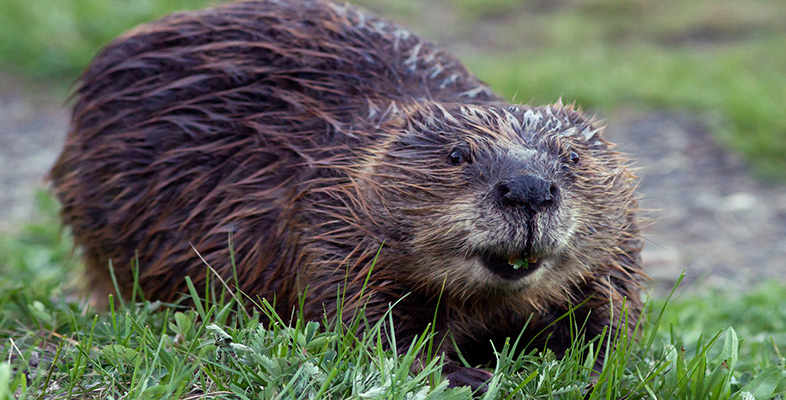4 Individual lives: the concept of fitness
4.1 A measure of success
If what I have highlighted so far were the whole story, the only adaptive features shown would be those that equipped the rodent for times of famine, which is patently not the case. It is obviously a very important factor in the production of new species because the most productive of rodents (rats and mice) account for about 1300 of the 2000 or so rodent species, following the figures given in the TV programme. In LoM you have seen many interesting characteristics to which adaptive functions have been ascribed, but they are not all characteristics that enable their possessors to withstand famine. Day by day some animals die whilst others live because they were just a bit more effective in some respect, and it is only animals that survive long enough to breed that have a chance of passing on favourable characteristics to their offspring. In biological terms the individuals that have the greatest lifetime reproductive success relative to other members of the population are said to be the fittest. Here is another common word with a very particular biological meaning. Fitness is a measure of an individual's lifetime reproductive success relative to other members of the population.
SAQ 16
Thinking back to the discussion of the topi (Section 3.4), how would you define lifetime reproductive success?
Answer
The lifetime reproductive success of an individual is the number of fertile offspring that an individual produces during its lifetime that survive to breed themselves. (Remember that I said it was too early to judge the topi's life a success at the stage where he had merely mated with numerous females.)
Lifetime reproductive success in mammals is directly dependent on three factors.
The number of eggs or sperm produced.
The proportion of eggs produced that are capable of being fertilised and beginning development or the proportion of sperm cells produced that are capable of fertilising an egg.
The proportion of fertilised eggs that complete development and survive to reach breeding age themselves.
Lifetime reproductive success is indirectly dependent on the many characteristics that increase the individual's chance of surviving long enough to breed. Factors such as being alert and avoiding predation, being efficient at metabolising food and being resistant to disease can all contribute to lifetime reproductive success and hence to the individual's fitness.
Fitness is always measured relative to other members of the population so it is often called relative fitness. Although there is selection against the less fit individuals, the selection pressure against them may not be very strong. The fittest individual in a population might leave 50 offspring, whilst a less successful individual leaves 45. Both individuals have left many offspring and there is the chance of the balance altering in subsequent generations if the characteristic that gave the fittest animal the advantage happens to become less relevant. A good example from the TV programme arises from the handling of acorns by grey squirrels.
Activity 3
Watch the programme from 05.35-08.56 again and jot down some notes on the difference in timing of germination in red and white acorns and the effect this has on the acorn gathering by these grey squirrels. Then try and write an account (in about 100 words) of this phenomenon. Compare your response with what follows.
Discussion
The acorns of red oaks don't germinate until the following spring, so are suitable for storage as they are. The white oak acorns normally germinate in the autumn, very soon after falling from the trees, so they are unsuitable for storage unless the embryo is removed - the germinating embryo would draw upon the stored nutrients (in this case, mostly starch) in the rest of the acorn, leaving nothing for the squirrel to eat. Squirrels can differentiate between the two acorns by smell; they store the acorns of red oaks but cut out and eat the embryo of the white oak before storing what remains.
Suppose a squirrel has a poor sense of smell and cannot reliably distinguish between the acorns from the red oaks and those from the white oaks. It might then store all the acorns it finds. Plentiful red oak acorns may have no negative consequences for the squirrel. Squirrels always store more than they need, so the loss to the squirrel of a few white oak acorns through their germination does not affect its ability to provision itself through the winter. However, if there is a poor crop of acorns from red oaks, then most of the squirrel's store is white oak acorns, which are of no use for the winter. This loss of red oak acorns may not be life-threatening, since squirrels eat other nuts and seeds as well, and insects (especially caterpillars) are a favourite. But the squirrel has wasted time and energy storing useless items, and its poor sense of smell means it will also be less good at finding hidden items of food stored by others.
You can see from what has been said that natural selection is not an all-or-nothing process. An individual that carries a few less favourable characteristics does not inevitably die young. The strength of selection varies. However, even very weak selection leading to a very small average difference in lifetime reproductive success will, if the selection pressure is maintained, result in a gradual increase in the numbers of the individuals with the more favourable characteristics as a percentage of the total population. In this way, through natural selection it would be possible for teeth that can chisel a hole in a Brazil nut to have evolved by a series of gradual changes.
